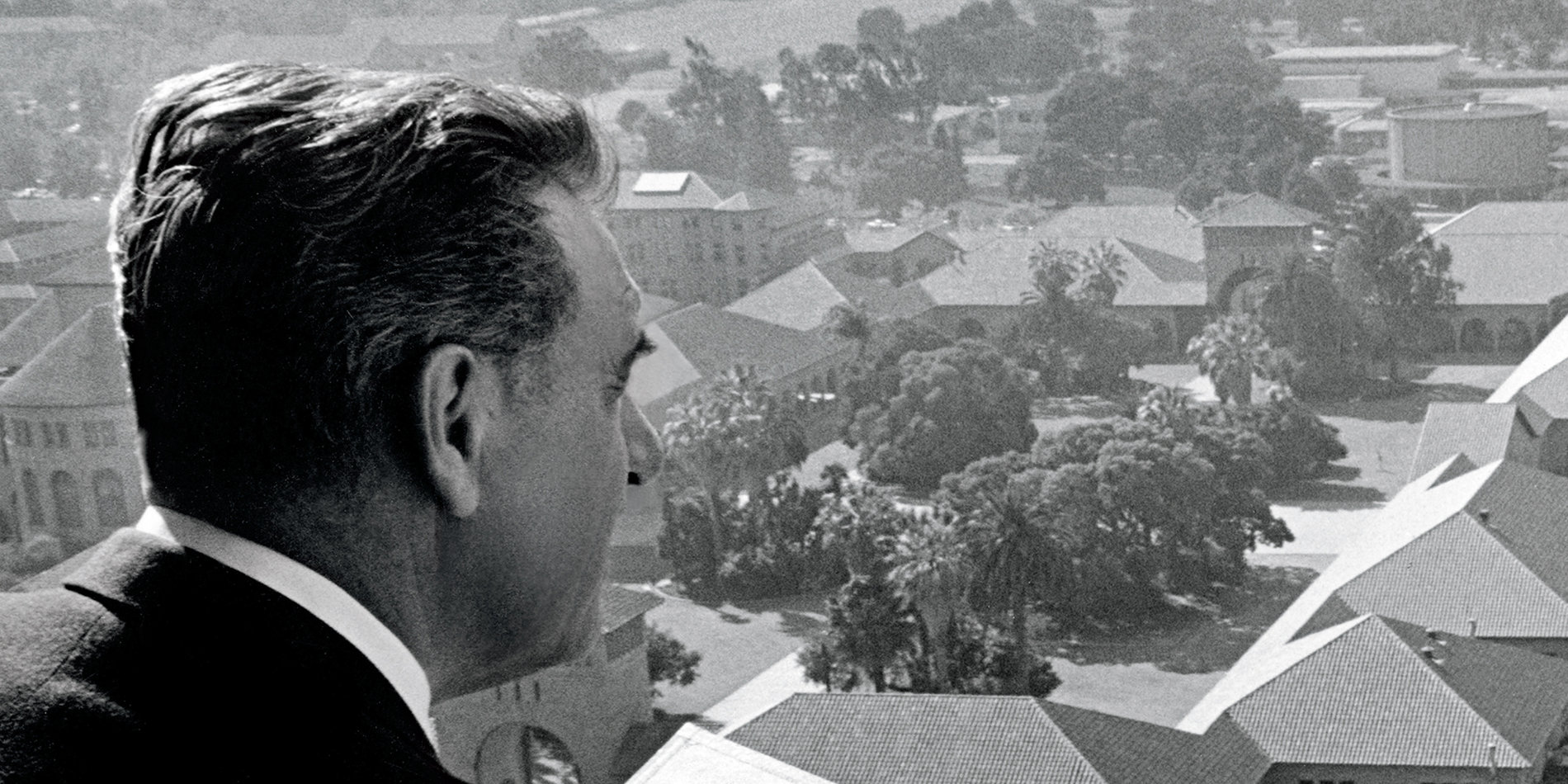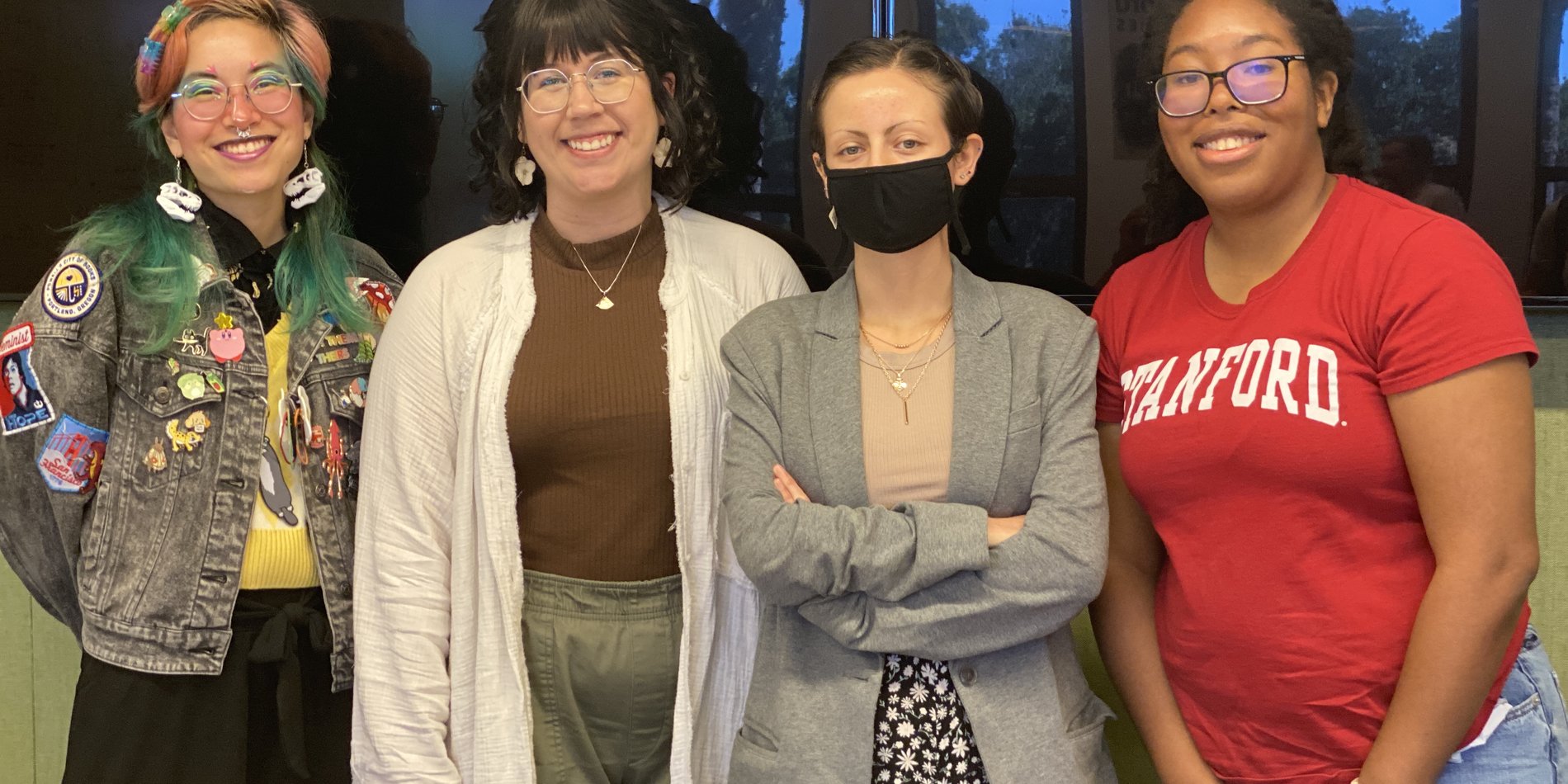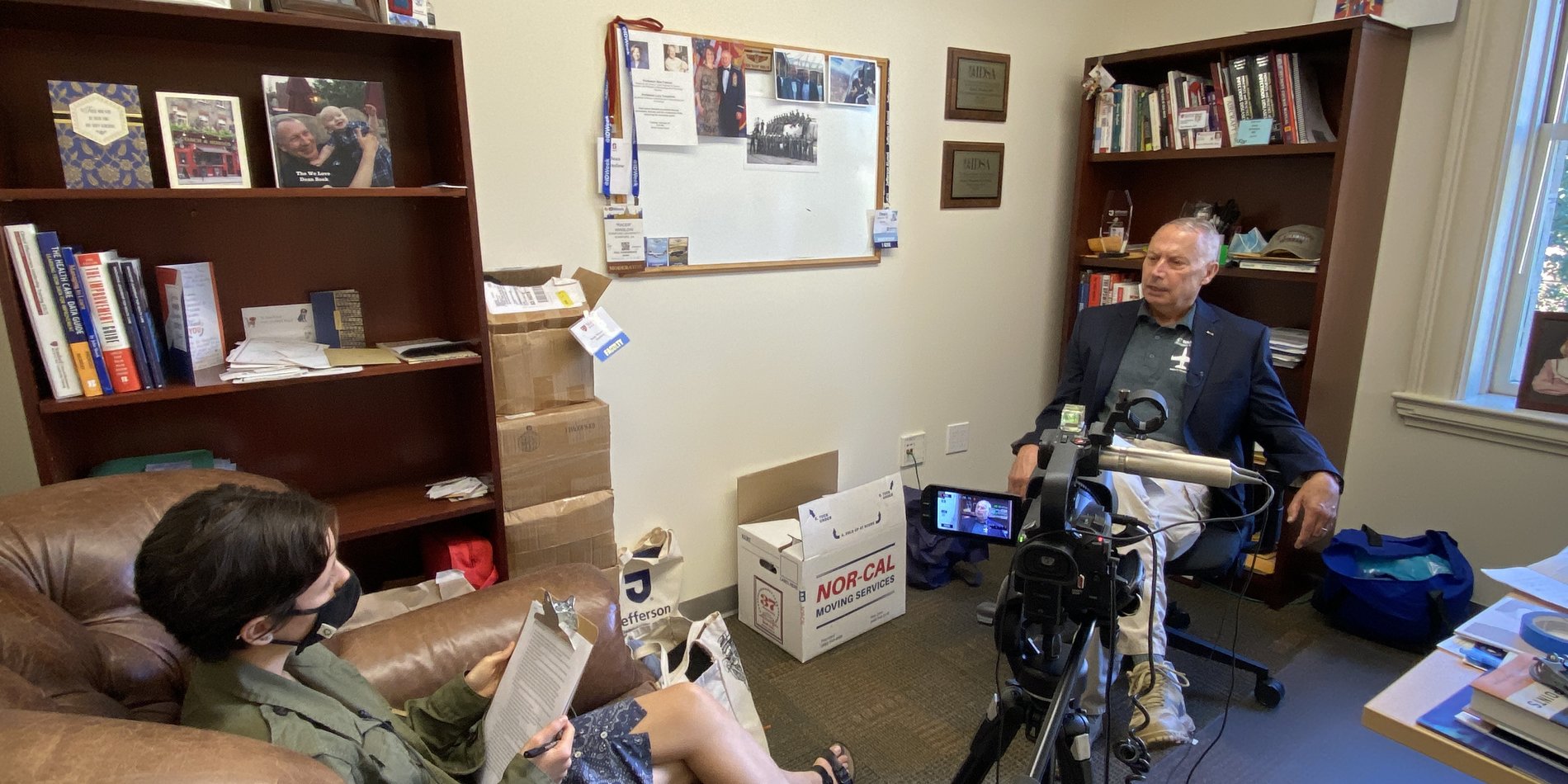SHS and University Archives host History In Community conference and workshops

Stanford Libraries Director of Special Collections Roberto Trujillo speaks at the History in Community Conference.
(Photo: Stanford Historical Society)
“Exploring together the history that surrounds us” was the tagline of the History in Community conference hosted by the Stanford Historical Society and the Stanford University Archives. On May 11-14, 2022, over 180 attendees did just that. Two years in the making, the event brought together campus and community in celebration of the many histories that surround us at Stanford and the people, methods, and techniques that preserve and interpret them for future generations.
The conference, funded by a grant from the Santa Clara County Historic Grant Program, included two days of in-person events that were anchored at the Frances C. Arrillaga Alumni Center but spread out across Stanford’s historic camps.
The Community History Roundtable: Gathering, Preserving, and Telling the Untold Stories of Santa Clara County and Beyond on May 12th featured panel sessions on topics such as Funding Community History, Documenting Activism, Bringing Community History and Ethnic Studies to the K-14 Classroom, and SF Bay Area Communities and the Archival Record. Presenters came from a broad array of Bay Area organizations, including the Berkeley South Asian Radical Walking Tour, History San Jose, La Raza Historical Society of Santa Clara Valley, and San Jose State. As University Archivist Josh Schneider, one of the roundtable organizers, remarked, “This gathering enabled community leaders, educators, and public history and archives practitioners who don’t often have the opportunity to speak to one another to meet, to listen, and to learn from each other–to everyone’s benefit.”
The roundtable included a plenary session moderated by Stanford Professor of History, Emeritus, Albert Camarillo that examined the opportunities and challenges of documenting and sharing community histories. Speakers included Susan D. Anderson, the History Curator and Program Manager of the California African American Museum; Valentin Lopez, the tribal chair of the Amah Mutsun Tribal Band; and Stephen Pitti, a Stanford graduate alum and professor of History and American Studies at Yale University.
The plenary speakers challenged the group to think deeply about Santa Clara County history. Anderson urged the group to reconsider the moniker “community history.” “There are hierarchies of historical knowledge that have been imposed by professional historians, especially in the academy. In my view, it's either all history, or it's all community history,” said Anderson. Lopez gave an impassioned talk that challenged extant narratives about Native Americans, emphasizing the need to understand the very long history of Native Americans in California as well as the history of oppression and dispossession of indigenous people that began in the 18th century. “The true history of the California tribes—of the Amah Mutsun—has never been told. We have been ignored, forgotten, and erased from history,” he said. Pitti, who has written extensively on the history of Latinos in Santa Clara County and in the United States, drew attention to some of the productive tensions it is necessary to explore to understand the history of Latinos in this area, including the dynamics of conquest and resistance, migration and place-making, politics and culture, and the old and the new. “Let’s together tell a more complicated, dynamic set of stories about the tensions…here and elsewhere,” urged Pitti.

History in Community plenary speakers (from left): Valentin Lopez, Susan Anderson, Stephen Pitti, and Albert Camarillo.
(Photo: Stanford Historical Society)
The Architectural Preservation Workshops held on May 13th featured skilled artisans showcasing the techniques they use to keep the beloved architectural features of Stanford’s historic main quad looking beautiful. Director of Architecture Sapna Marfatia, the university staff member in charge of the Quad’s historic preservation program and the creative force behind the day’s programming, conceived of the workshops in order to document the university’s stewardship efforts for the future. “I loved seeing the passion and commitment each artisan brings to their work. They have a long history with the buildings but don’t always have the opportunity to share their expertise and knowledge. Seeing them in their element, describing how they do their work was really rewarding,” she commented.
Workshop presenter Lesley Bone, an objects conservator who has worked on projects at Stanford since the 1980s, provided an overview of the history of the stained glass and mosaics that adorn Stanford’s Memorial Church and offered attendees a close-up look at the original drawings and other materials held in the Stanford Archives. Bone, who helped ensure the preservation work done on the church after the Loma Prieta Earthquake stayed true to the original materials and design, described the importance of MemChu to Stanford’s history: “It has these many layers of meaning that you can still read very readily…I hope that they’ll go the extra mile to keep the original intent of the artisans, and Mrs. Stanford to a certain extent, intact.”

Workshop presenter Lesley Bone explains mosaic and stained glass artifacts to attendees.
(Photo: Stanford Historical Society)
Oleg Lobykin, an award-winning stone carver, masonry restoration contractor and sculptor, who has worked on preserving the sandstone architectural features at Stanford for over twenty years, showcased the tools and techniques he uses and shared stories of memorable projects such as the removal of the statue of Louis Agassiz from the facade of Building 420. He emphasized the need to protect sandstone from excessive exposure to water, including wayward sprinklers like those that once damaged the balustrade at the main entrance to the quad. Loybkin had some advice for future Stanford stone carvers: “Do your best and protect it for the future generations. And be careful. Go slow. Measure seven times and cut only once–but it will be the right cut.”
David Wessel and his team from Architectural Resources Group gave visitors a new appreciation for the dual-tone concrete flooring that brings style to the arcades surrounding the Quad as well as Stanford’s iconic red-tiled roofs. Among other things, Wessel explained the elaborate color matching process that his team developed in the absence of materials from the original quarry. “It gives you a real appreciation for these stones we walk over every day. It never occurred to me to wonder how they would maintain the look and feel when one had to be replaced,” remarked one attendee.
History in Community events extended to the virtual realm as well, with experts from the Stanford Libraries and the SHS Oral History Program sharing tips on archival and records management practices, oral history project planning and interviewing, digital humanities applications, and the basics of archiving born-digital materials, such as emails and websites.
In her closing remarks on May 13th, University Archaeologist and conference organizer Laura Jones asked, “Where Do We Go From Here?”, urging attendees to think about how we might continue to create space and opportunities for Bay Area communities of historical and conservation practice to come together. Conference goers expressed a desire for similar opportunities for learning and sharing in future. In the words of an attendee, “Gathering together to better understand the landscape of this work is one of the most important things in moving the work forward.”
Gratified by the success of the conference and online workshops, the planning committee--Charlotte Kwok Glasser, Laura Jones, Sapna Marfatia, Natalie Marine-Street, Josh Schneider, and Susan Sweeney--will now focus on the processing of the recordings of the conference sessions and workshops in the coming months. Once finalized, the video recordings will be posted online and made accessible through the society’s website.
To provide snapshots of the conference programs, the committee posted a selection of the event photos on the SHS Facebook page.


